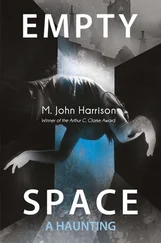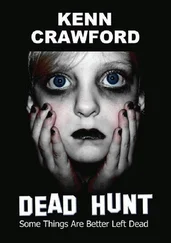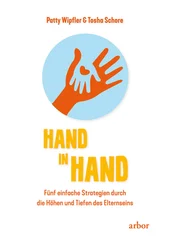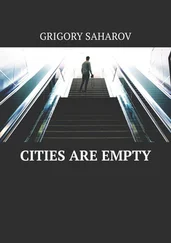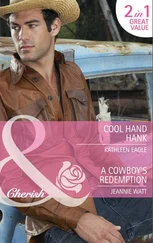The Emergence of the Naha-te
The Origins of the Tomari-te
The Shitō Style as Heritage of the Okinawa-te
2 Shitō Karate – the Teachings of Mabuni Kenwa
2.1 “Captured” in the World of Budō
Striving for a Healthy Body
A Life Without Selfishness and Greed
Praised by Kanō Jigorō
Funakoshi Gichin Learned Kata From My Father
The Creation of the Shitō Ryū
Following My Father’s Footsteps
My Father’s Goals
Shitō Karate is Authentic Budō Karate
2.2 The Pleasure of Learning and Teaching Karate
How to Teach Karate
Karate for Children and Youngsters
The Wealth of the Traditional Kata
Karate in Europe
A Lack of True Leaders in Karate
3 How to Overcome the Own Limits
3.1 Karate – More than Kicks and Punches
Yagyū Sekishūsai and the Art of Mutō Dori
Karate Turns the Whole Body into a Weapon
How to Harden the Body
Thrusts with Muchimi
Karate as Support for Every Budōka
3.2 Blocking is Attacking – Without Beat
Starting With a Block
Blocking the Opponent’s Attack With a More Powerful Counterattack
Rhythm and Speed
The Five Principles of Blocking
3.3 Learning the Techniques
The Diversity of the Kata Techniques
Three Principles of the Bujutsu
The Principle of Hikite
Understanding the Heian Sandan Kata as Fighting Technique
The Gojūshiho Kata, and how to Cope with Unexpected Attacks
The Kata Niipaipo and Haufā
4 Criticizing Present-Day Budō
4.1 Budō Becoming Sport
Sport or Martial Technique
Competitive Sports and Ritual Games
Hagoita – Ritual and Game
Sports or Budō – What is More Serious?
Separation of Sports and Budō
Sundome and Full Contact
4.2 Modern Competition and Budō
The Assessment of Competition Kata
Is Modern Karate Really a Progress?
Flowing Techniques – Consciousness Going Ahead
Learning in the Flow of the Practice
The Reductionism of Sports
Competition Karate Returning to Ancient Patterns
4.3 The Unity of Soul, Body and Technique
Testing the Abilities Before Kumite Came into Use
Harmony instead of Competition
“There is no First Attack in Karate”
II The Spirit of Budō
1 The Essence of Budō
1.1 The Difference between Budō and Violence
Taking Life, Giving Life
Karate and the Spirit of Respect (Shurei)
The Meaning of the Karate Techniques
The “Superhuman Techniques” of Ueshiba Morihei
The Main Principle of Karate: The Body Follows the Mind
1.2 Beyond the Natural Movements of the Body
Reacting to Natural Changes
“God-like” Techniques, and the Falling Dewdrop
The Magic Experience of the Control of Gravity
Ambling, and the Parallel Punch
The Release of Power in Budō and Sports
The Crab Walk, and “Taking the Knees out”
2 Victory or Defeat
2.1 Their Famous Fights
Ōyama Masutatsu’s Report
A Lack of Heroic Stories
Matsumura’s Fight with his Bride
Matsumura and the Bull they Called “the Killer”
Knocking down a Raging Bull
2.2 Not to Lose Means Winning
Victory Without Struggle
A Victory by Running Away
Matsumura Sōkon and the Big Guy
The “Miyamoto Musashi of the Ryūkyūs”
2.3 The Absolute Will to Win in the Yagyū Ryū
Sword Fighting and “Mental Cleansing”
The “Life Saving Sword”
Mutō Dori and the Point of Origin of Karate
Yamaoka Tesshū and the Mutō Dori
Karate and the Yagyū Ryū
2.4 The “Soundless Kamae”
The Satori of Yamaoka Tesshū
“There is no Kamae in Karate”
The Simultaneous Withdrawal of Both Opponents
The Utmost Spheres of Bu Are Beyond those of Zen
A Sword with Blunt Blade
3 Karate as “Zen in Motion”
3.1 The Sphere of Emptiness (Kū) in Karate
Karate as the “Fist of the Nobles”
The Sūpārinpai Kata and the Worldly Desires that Cause Suffering
Karate – the Hand Reaching into the Spheres of Emptiness
The Enlightenment of the Novelist
The Buddha Nature in the Depths of the Heart
3.2 “Zen in motion”, and the Rules of Breathing
“Zen in motion” – the Unity of Body, Soul and Technique
Arranging the Soul
Regulating Body and Breathing
Types and Forms of Breathing
Yin and Yang in Breathing
3.3 Preventing Disorder
Methods to Prevent Disorder
The Story of the Marvelous Techniques of the Old Cat
Theory and Experience
The Spirit of Death Defiance
Preventing Disorder
Bu – Never Accomplished
Afterword by the Editor of the Japanese Edition
Footnotes
I met sensei Mabuni Kenei for the first time in November 1965. At that time I was 18 years old and sensei Mabuni came to my hometown Quetzaltenango for a karate demonstration together with a group of karateka from the capital Guatemala City. Already in ancient times Quetzaltenango was a Maya city and it is the second largest city of Guatemala today.
Sensei Mabuni had already been staying in Central America for a year, at first in Mexico following an invitation by sensei Murata Nobuyoshi, and then in Guatemala where at that time about one thousand karateka were practicing Shitō ryū.
I still had no karate experience, nevertheless I realized that there was a great difference between the way of moving demonstrated by sensei Mabuni and the performance of the other karateka representing various schools. I was so impressed that I decided on the spot to study karate. So, I joined the Shitō ryū club in my hometown. My first teachers were Jorge Sosa and Nobuyoshi Murata. I learned the basics of Shitō ryū and a lot about the history of the Mabuni family from sensei Murata.
In 1969 when I received the 1st kyū I got the chance to attend a lesson by sensei Mabuni in Guatemala City. This was a great honor for me. About 20 disciples, all of them holders of the 1st kyū degree participated in this lesson. We all had studied different karate techniques for several years, but Sensei Mabuni exclusively trained breathing techniques with us. After two hours of such exercises, of the 20 participants only a friend of mine and myself were ready to continue. The other ones left the training room because they could not bear the constraints caused by the breathing techniques any longer. When the two of us were alone with sensei Mabuni he said: “Now you can begin to study karatedō.”
Sensei Mabuni stayed for another year in the Guatemalan capital. To attend his lessons we traveled every week the 120 miles between Quetzaltenango and Guatemala City.
In 1974 Sensei Mabuni came for the last time to Guatemala. At that time I held the 2nd dan. In 1976 I decided to visit my Sensei in Japan. However, on the way to Japan first I came to Europe – to Berlin. Here I met a lot of people who asked me to teach them karate. So, I stayed there.
I met Sensei Mabuni again only in 1984 – on Corsica. He was invited by sensei Nakahashi Hidetoshi who had been living in France for many years. Hence I became a disciple of sensei Nakahashi until sensei Mabuni accepted me as his uchi deshi1. Since then I have been trying very hard to deepen my understanding of Shitō ryū karate under the guidance of sensei Mabuni and supported by sensei Nakahashi and Sensei Hatano. Thanks to sensei Mabuni I could learn a lot about the essence of budō karate. He always emphasized that karate is no sport but a way of life that can be helpful in any situation.
I feel grateful and happy that sensei Mabuni has decided to express his ideas in this book that has become not only a source of the Shitō ryū but also shows the history of the origins of karate as martial art and way of life. When I look back to my first steps in karatedō, trying to compare my personal character of those days with the present one I realize how much I have changed. Only now I begin to understand what he ceaselessly has taught since then. Sensei Mabuni always stressed the importance of values like politeness, charity, respect and grace, and he always warned us of the dangers of mistrust, laziness, pride and envy. Although I am not always able to achieve all of this in my own life I begin to understand that these values are the basis of social and human existence. There is a motto he always uses to repeat and that is now deeply ingrained in my heart: “Try to improve, become better today than you were yesterday, and tomorrow become better than today.”
Читать дальше


